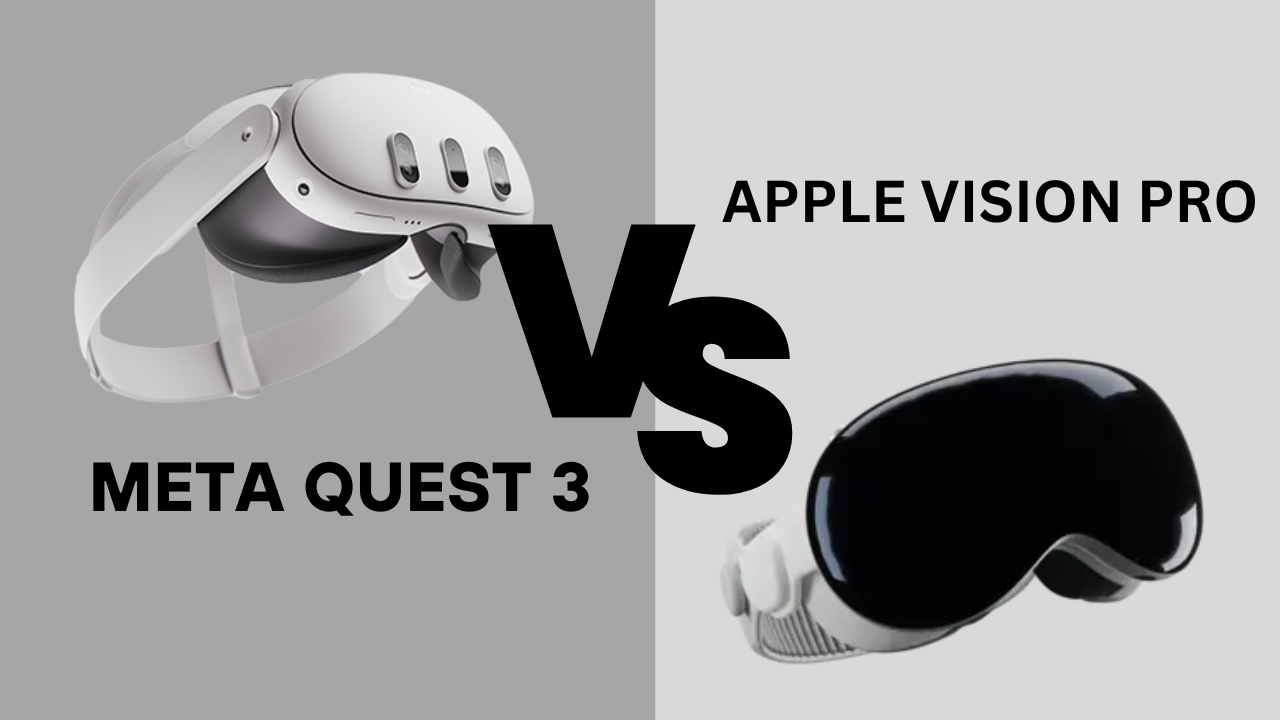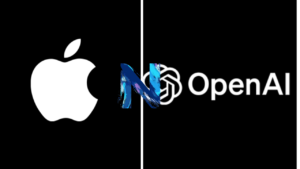Comparing the Meta Quest 3 vs the Apple Vision Pro shows an interesting competition in the virtual reality headset market. This blog post compares two popular devices, discussing design, display, performance, and more.
If you love VR or are new to it, we want to help you make informed choices. We offer detailed information to assist you in finding the best virtual reality experience. Learn about the Meta Quest 3 and Apple Vision Pro to make a smart choice for your VR experience. Discover their strengths, weaknesses, and special features with us.
Table of Contents
Design and Build Quality
In the comparison of design and build quality between the Meta Quest 3 vs Apple Vision Pro and the other brands have carefully made these VR headsets, showing their dedication to design and brand. This focus on details shows their different ways of approaching the VR market and meeting the needs of various users.
Meta Quest 3 is designed with a focus on accessibility and comfort. It features a lightweight, balanced structure that aims to reduce fatigue during extended use. The adjustable straps and contoured design ensure a snug fit for various head shapes and sizes, making it a versatile option for a wide range of users. Its build quality is robust, designed to withstand the rigors of daily use while maintaining a sleek, user-friendly interface.

Apple Vision Pro, on the other hand, showcases Apple’s signature approach to premium design and materials. It boasts a more sophisticated, minimalist aesthetic, with attention to detail that appeals to users looking for a high-end VR experience. The use of premium materials not only enhances durability but also adds to the overall user experience, providing a sense of luxury and exclusivity. The Vision Pro is designed to merge seamlessly with the user’s lifestyle, reflecting Apple’s philosophy of technology as an extension of personal style.
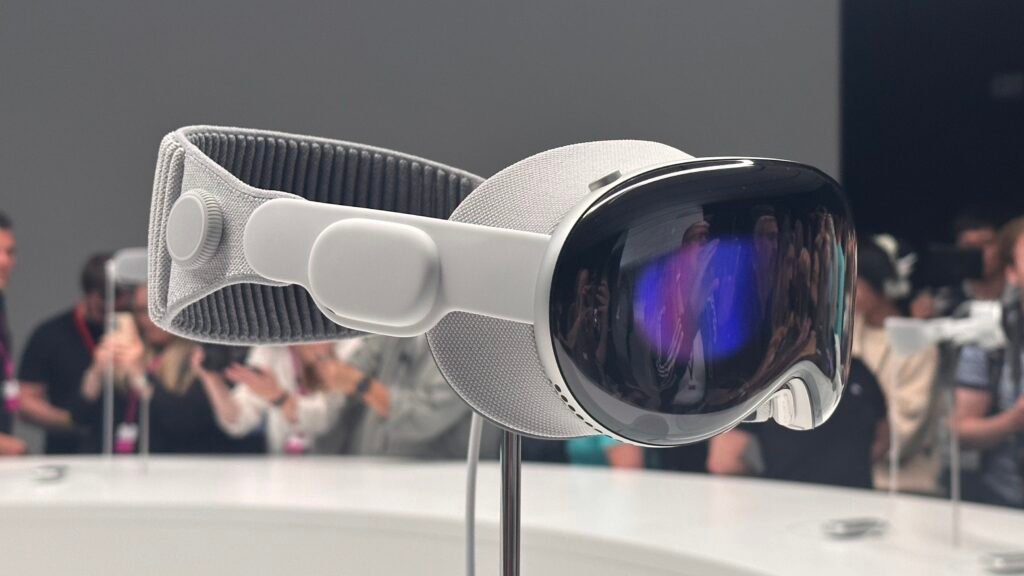
In comparing the design and build quality of the Meta Quest 3 vs Apple Vision Pro, it’s evident that both devices cater to different preferences and expectations. The Meta Quest 3 prioritizes practicality and comfort, making it a great choice for long gaming sessions or extensive use. In contrast, the Apple Vision Pro targets users looking for premium design and build quality, emphasizing aesthetic appeal and a high-quality finish.
Display and Visual Quality
In the realm of virtual reality, display and visual quality are pivotal in providing an immersive and lifelike experience. This comparison between the Meta Quest 3 and the Apple Vision Pro reveals how each device approaches visual performance, a crucial aspect for users seeking the most engaging VR encounters.
Meta Quest 3 impresses with its display capabilities, offering a high-resolution screen that ensures crisp, clear images. The device leverages advanced OLED technology, known for its deep blacks and vibrant color contrast, enhancing the realism of virtual environments. The refresh rate is also a highlight, with the Meta Quest 3 supporting high frame rates to ensure smooth motion without lag, crucial for maintaining immersion and reducing motion sickness in VR.
Apple Vision Pro, in keeping with Apple’s reputation for exceptional display quality, sets a high bar for visual fidelity in the VR space. The device features a cutting-edge microLED display, which offers remarkable brightness and color accuracy, alongside an impressive resolution that pushes the boundaries of visual clarity in VR. The Apple Vision Pro’s display technology not only enhances the depth and immersion of VR experiences but also provides a wide color gamut that makes virtual worlds feel more alive and realistic.
In comparing display and visual quality between the Meta Quest 3 vs Apple Vision Pro, it’s evident that both devices strive to deliver superior visual experiences, albeit through different technological advancements. The Meta Quest 3 offers a high-performance OLED display with excellent refresh rates, suitable for gamers and VR enthusiasts who value smooth, vibrant visuals. The Apple Vision Pro, with its microLED technology, aims at users seeking the utmost in display quality, with unparalleled brightness and color precision.
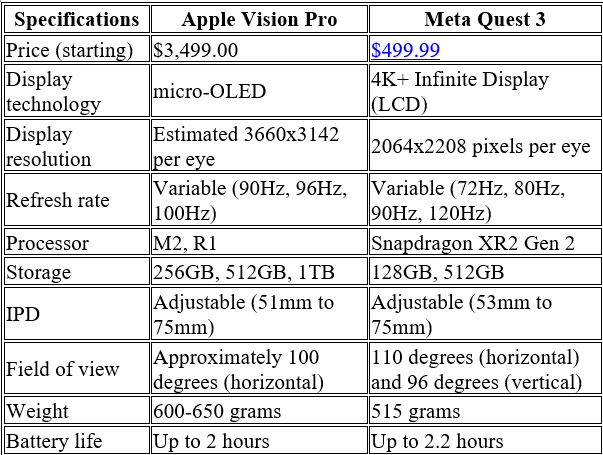
Performance and Hardware
The performance and hardware capabilities of a virtual reality headset determine its ability to deliver smooth, immersive experiences without interruptions. In the comparison of the Meta Quest 3 vs Apple Vision Pro, we delve into how each device’s hardware specifications cater to the demands of modern VR content.
Meta Quest 3 is equipped with a powerful, custom-designed processor tailored for virtual reality. This processor, coupled with high-speed RAM, ensures that the Meta Quest 3 can handle complex VR applications and games with ease. The device’s focus on optimizing VR performance means that users can expect quick load times and minimal lag, even in graphically intense environments. Additionally, the Meta Quest 3’s internal storage options are generous, allowing users to store a vast array of apps and games directly on the device.
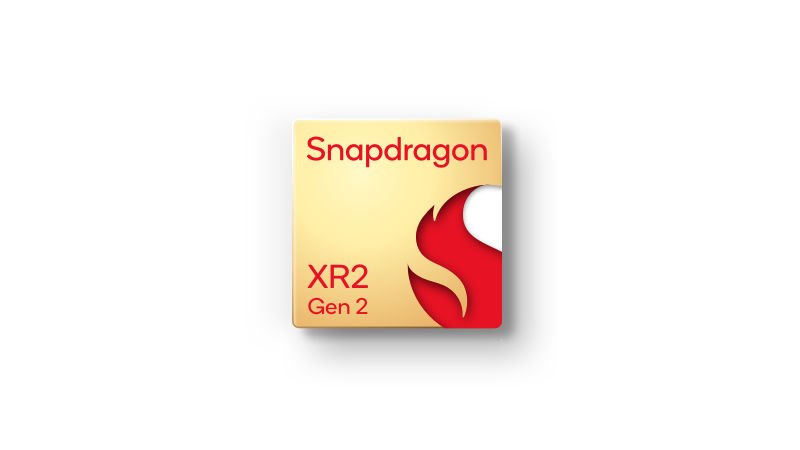
Apple Vision Pro, on the other hand, pushes the envelope with its cutting-edge hardware. Apple’s proprietary silicon is at the heart of the Vision Pro, ensuring top-tier performance that leverages years of research and development. The integration of this high-performance chip with Apple’s software ecosystem allows for unparalleled efficiency and optimization. The Vision Pro also boasts advanced features like spatial audio processing and machine learning capabilities for a more intelligent and responsive VR experience.
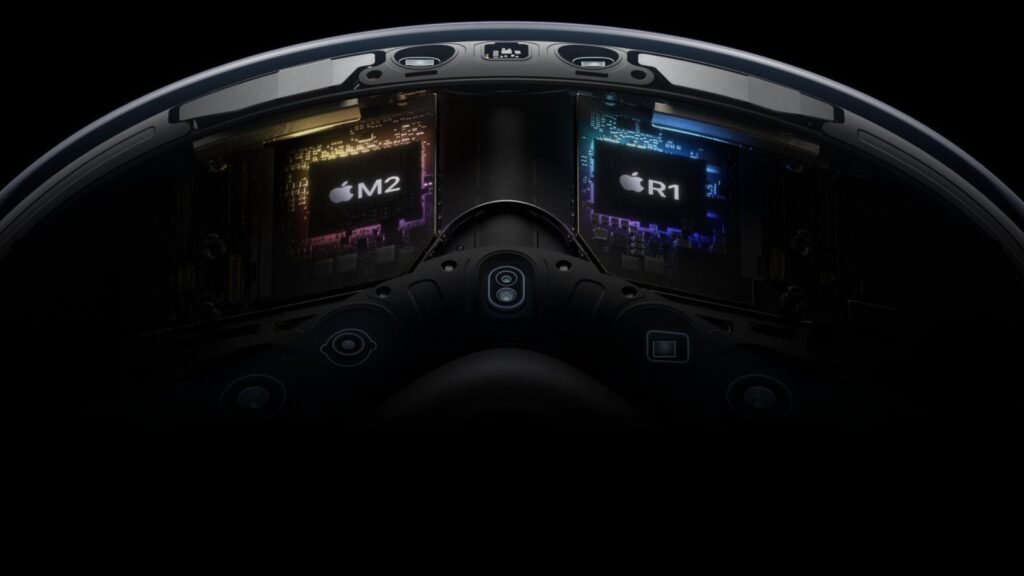
When comparing the performance and hardware of the Meta Quest 3 vs Apple Vision Pro, it’s clear that both devices are designed to offer robust VR experiences. The Meta Quest 3’s custom VR processor and ample storage options make it a strong contender for those seeking reliable performance. Meanwhile, the Apple Vision Pro’s use of proprietary silicon and integration with Apple’s ecosystem sets a new standard for efficiency and advanced VR functionalities.
Software and Ecosystem
The software and how easy it is to use and connect with other services are key in making a virtual reality headset enjoyable. When we look at Meta Quest 3 vs Apple Vision Pro, we see how each of their software ecosystems attracts users.
The Meta Quest 3 benefits from its Oculus VR ecosystem, which is open and easy to use. Users have access to a wide range of apps, games, and experiences, from fun games to learning tools. The Oculus Store is user-friendly, making finding new things simple.
Additionally, Meta Quest 3 offers the Oculus Link feature, allowing users to connect the headset to a PC for more VR content, including advanced PC VR games. It also integrates well with social features, making it easy for users to hang out with friends in virtual places and enjoy social activities together.
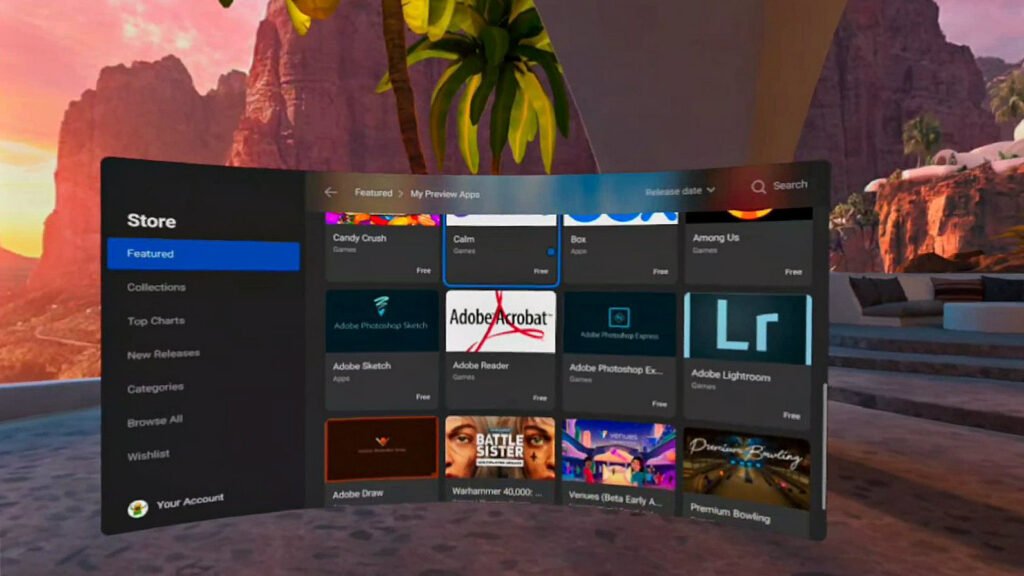
Apple Vision Pro, on the other hand, benefits from Apple’s renowned ecosystem integration. Leveraging its well-established software infrastructure, the Vision Pro offers seamless compatibility with a range of Apple services and products. This means users can expect a smooth transition between their VR content and other Apple devices, enhancing the continuity of the user experience. The Apple Vision Pro also introduces a unique approach to VR content discovery and consumption, with a focus on quality and exclusivity. Its software ecosystem is designed to prioritize user privacy and security, providing peace of mind for users navigating the virtual world.
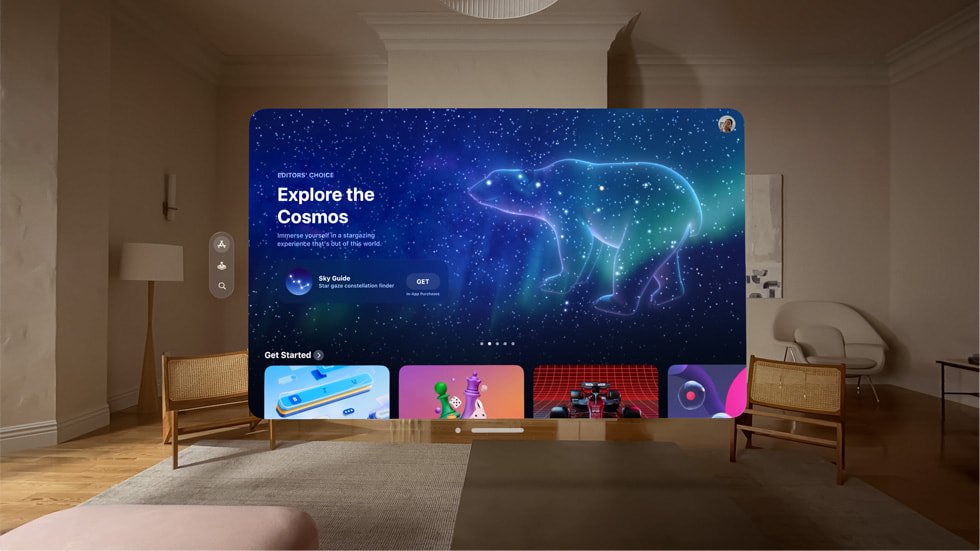
In the comparison of the software and ecosystem of the Meta Quest 3 vs Apple Vision Pro, it’s evident that both devices offer compelling platforms but cater to different user preferences. The Meta Quest 3 is ideal for users looking for a wide range of content and the flexibility to explore VR beyond standalone experiences. Meanwhile, the Apple Vision Pro is suited for users invested in the Apple ecosystem, valuing seamless integration, quality content, and privacy.
Immersive Experience
The immersive experience provided by a virtual reality headset is arguably the most crucial aspect for users, as it defines the overall quality and enjoyment of VR. In our comparison of the Meta Quest 3 vs Apple Vision Pro, we delve into how each device crafts its immersive environments and engages the user’s senses to deliver a compelling virtual reality experience.
Meta Quest 3 excels in creating a highly immersive VR experience through a combination of precise motion tracking, high-quality graphics, and intuitive controls. The device employs advanced motion tracking technology to accurately translate the user’s movements into the virtual world, enhancing the feeling of presence. The Quest 3’s controllers are ergonomically designed to provide comfortable and natural interactions, further deepening the immersion.
The headset’s spatial audio technology also plays a significant role, delivering sound that adjusts to the user’s movements and interactions within the environment, creating a more realistic auditory experience.

Apple Vision Pro, meanwhile, aims to redefine immersive experiences by leveraging its cutting-edge display technology and ecosystem integration. The Vision Pro’s microLED screen offers unmatched visual clarity and color accuracy, making virtual environments more lifelike. Apple’s emphasis on augmented reality (AR) within its VR experiences introduces a unique layer of immersion, blending digital content seamlessly with the real world.
This is complemented by Apple’s spatial audio technology, which, like the Quest 3, creates an immersive soundscape that dynamically responds to the user’s environment and movements.
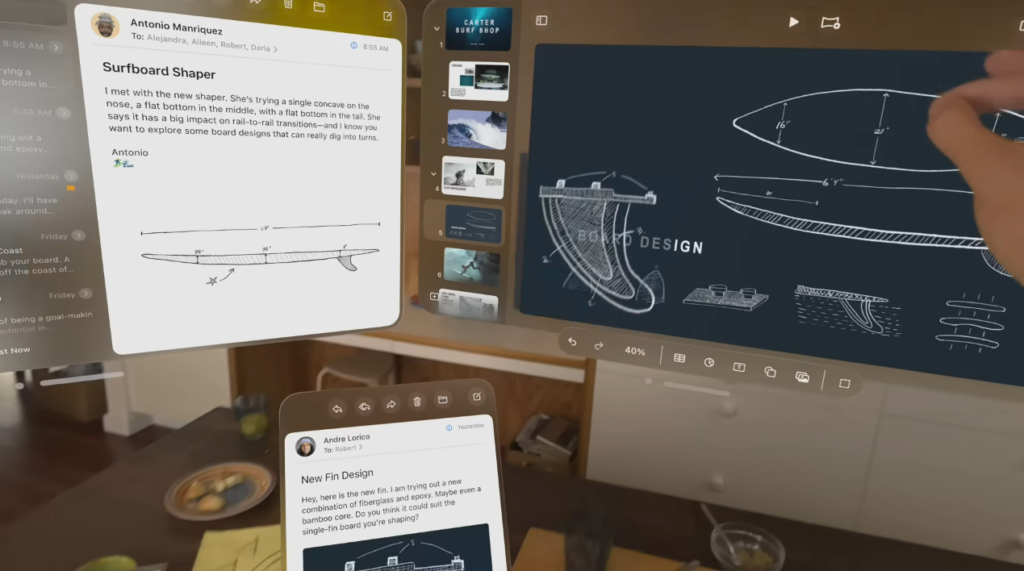
In comparing the immersive experience of the Meta Quest 3 vs Apple Vision Pro, both headsets showcase their commitment to delivering immersive and engaging VR. The Quest 3 focuses on accurate motion tracking, ergonomic controls, and spatial audio to create a convincing virtual space. In contrast, the Apple Vision Pro uses its superior display quality, integration of AR, and ecosystem coherence to offer a unique and seamless immersive experience.
Compatibility and Connectivity
In the realm of virtual reality, the compatibility and connectivity of a headset determine its flexibility and the breadth of experiences it can offer. As we compare the Meta Quest 3 vs Apple Vision Pro, it’s essential to understand how each device connects with other technologies and ecosystems, impacting user experience and convenience.
Meta Quest 3 stands out for its versatile compatibility and robust connectivity options. Designed as a standalone VR headset, it doesn’t require a PC or console to operate, offering users a plug-and-play experience right out of the box. However, for those who wish to access PC VR titles, the Quest 3 supports Oculus Link, allowing it to connect to a computer via a USB-C cable or wirelessly for an expanded library of VR content.
Additionally, the device boasts Wi-Fi 6 support for smoother online interactions and Bluetooth connectivity for external devices like headphones and gaming controllers.

Apple Vision Pro, on the other hand, benefits from Apple’s ecosystem for unmatched compatibility and connectivity. The headset is designed to work seamlessly with a range of Apple products, including iPhone, iPad, Mac, and Apple TV, enabling users to easily switch between devices and extend their VR experiences across the Apple ecosystem. The Vision Pro features ultra-wideband (UWB) technology for precise spatial awareness and device pairing, along with Wi-Fi 6E for fast and reliable wireless connections.
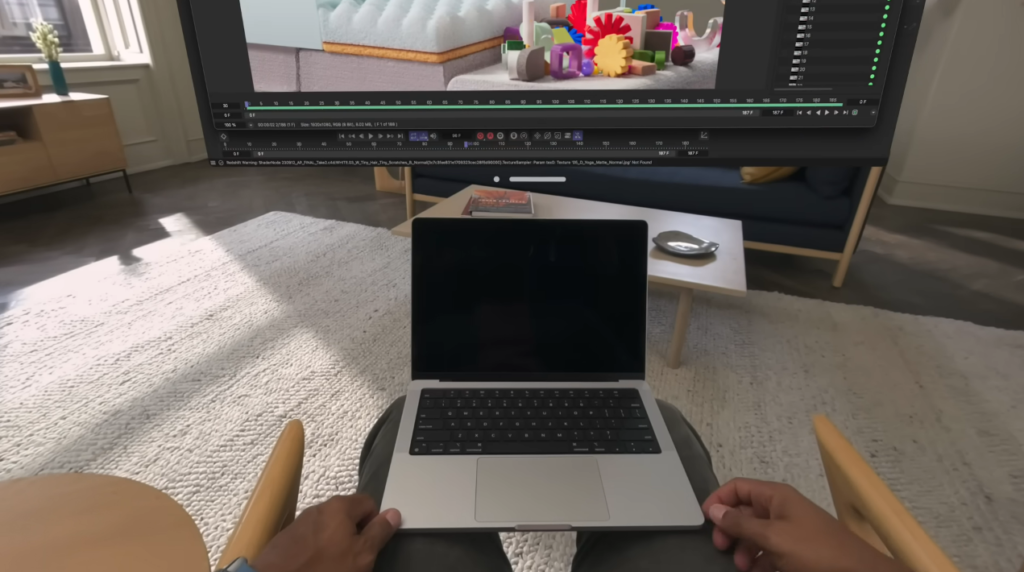
When comparing the compatibility and connectivity of the Meta Quest 3 vs Apple Vision Pro, both devices offer distinct advantages. The Quest 3 provides flexibility through its standalone operation and PC connectivity, making it accessible to a wide range of users. In contrast, the Apple Vision Pro’s strength lies in its deep integration with the Apple ecosystem, offering a seamless experience for users already invested in Apple products.
Battery Life and Power Management
Battery life and power management are crucial factors for users when selecting a virtual reality headset, as they directly impact the duration and convenience of uninterrupted VR experiences. In our comparison of the Meta Quest 3 vs. Apple Vision Pro, we explore how each device ensures sustained performance through their respective approaches to battery technology and power efficiency.
Meta Quest 3 is designed with a focus on balancing performance and energy efficiency to maximize battery life. The headset features an advanced battery management system that optimizes power consumption based on the user’s activity, ensuring longer play sessions without frequent recharging. With its built-in rechargeable battery, the Quest 3 typically offers several hours of continuous use on a single charge, depending on the intensity of the applications being used.
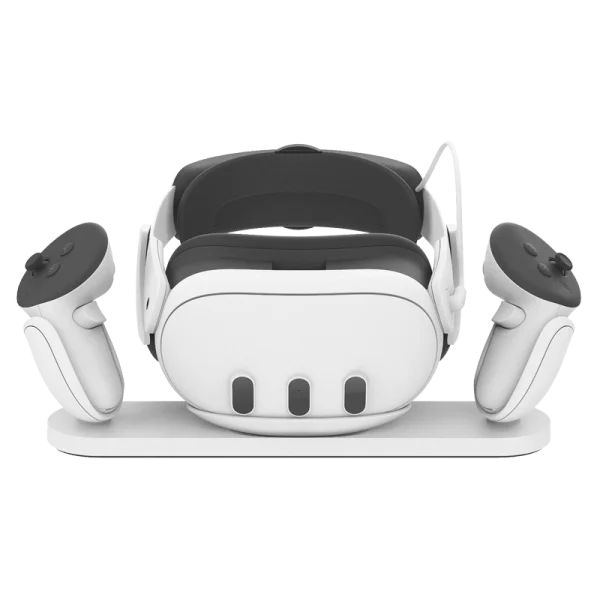
Apple Vision Pro takes advantage of Apple’s expertise in hardware and software integration to deliver exceptional battery performance. The Vision Pro incorporates a high-capacity battery that supports Apple’s energy-efficient processors and display technology, allowing users to enjoy extended VR sessions. Furthermore, Apple’s proprietary power management software intelligently adjusts system resources to minimize energy consumption without compromising the immersive experience.
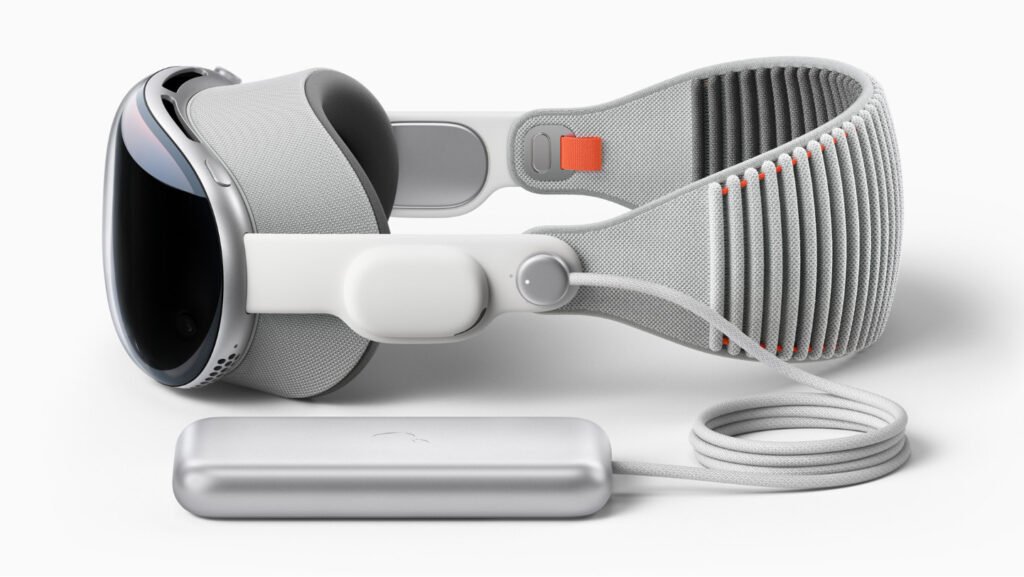
When comparing the battery life and power management of the Meta Quest 3 vs Apple Vision Pro, it’s evident that both headsets are engineered to provide users with a balance of performance and longevity. The Quest 3’s adaptive power management system and efficient hardware make it a reliable choice for lengthy VR engagements. Meanwhile, the Apple Vision Pro benefits from Apple’s holistic approach to design, leveraging optimized hardware and software to extend battery life even further.
Augmented Reality Features
Augmented reality (AR) features represent a significant advancement in how users interact with digital content, blending virtual elements seamlessly with the real world. When comparing the Meta Quest 3 vs Apple Vision Pro, exploring each device’s approach to augmented reality reveals their potential to redefine user experiences beyond traditional VR.
Meta Quest 3 incorporates AR capabilities through its mixed reality system, allowing users to engage with virtual content overlaid onto their physical environment. This is facilitated by the headset’s external cameras and software that accurately map and understand the user’s surroundings. The Quest 3’s AR features are designed to enhance gaming, productivity, and social interactions, making virtual elements appear as if they are part of the real world.

Apple Vision Pro, with Apple’s longstanding interest in AR, is expected to push the boundaries of augmented reality features. Leveraging high-resolution cameras and advanced sensors, the Vision Pro can deliver highly detailed and immersive AR experiences. Apple’s ecosystem and focus on user experience mean that the Vision Pro’s AR features are likely integrated with a range of apps and services, offering seamless transitions between virtual and augmented realities.
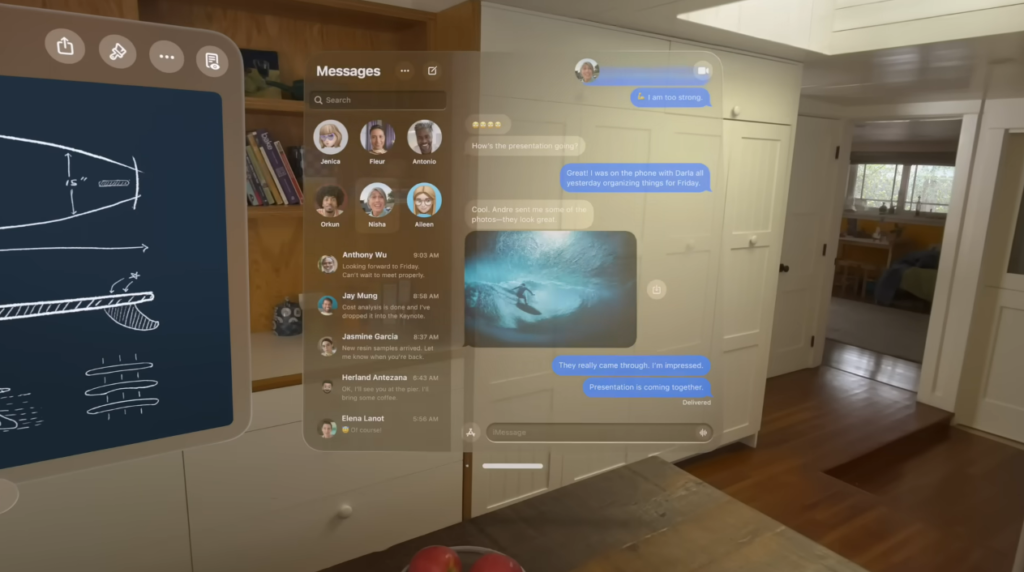
Comparing the augmented reality features of the Meta Quest 3 vs Apple Vision Pro highlights each device’s commitment to expanding the horizons of immersive technology. The Quest 3 offers robust AR capabilities that enhance a variety of user experiences, from gaming to productivity. Meanwhile, the Vision Pro’s sophisticated AR integration reflects Apple’s vision for a future where digital and physical realities converge more seamlessly.
Developer Support and Expansion
Developer support and expansion capabilities are crucial for the growth and diversity of content within the virtual reality ecosystem. As we delve into the Meta Quest 3 vs Apple Vision Pro, understanding how each platform supports developers can give us insights into the future potential of each device.
Meta Quest 3 benefits from a well-established developer community, thanks to Meta’s commitment to providing comprehensive resources and tools for content creation. The Quest platform offers an accessible SDK (Software Development Kit), extensive documentation, and a supportive community forum that encourages innovation and collaboration among developers. This open approach facilitates a wide variety of applications and games, contributing to the ecosystem’s richness.
Apple Vision Pro, leveraging Apple’s reputation for creating tightly integrated hardware and software ecosystems, offers developers the advantage of high-quality development tools and a seamless distribution process through the App Store. Apple’s ARKit, combined with the Vision Pro’s advanced sensors and processing power, allows developers to create immersive AR and VR experiences with unparalleled detail and realism.
Comparing the developer support and expansion for the Meta Quest 3 vs Apple Vision Pro showcases the different strategies each company employs to nurture their VR platforms. Meta’s open ecosystem and collaborative community make the Quest 3 an attractive option for indie developers and VR startups. In contrast, Apple’s focus on quality and integration appeals to developers looking to create premium experiences leveraging the latest AR and VR technologies.
Price and Value for Money
When evaluating virtual reality headsets, the price and value for money are significant considerations for consumers. In the comparison of the Meta Quest 3 vs Apple Vision Pro, we’ll explore how each device’s pricing aligns with its features, ecosystem, and overall user experience to help potential buyers make an informed decision.
Meta Quest 3 is positioned as a more accessible VR headset, designed to offer a high-quality virtual reality experience at a competitive price point. Meta has focused on providing a balance between advanced features and affordability, making the Quest 3 an attractive option for those new to VR or looking for good value. The device’s standalone operation, comprehensive library of content, and robust developer support contribute to its strong value proposition.
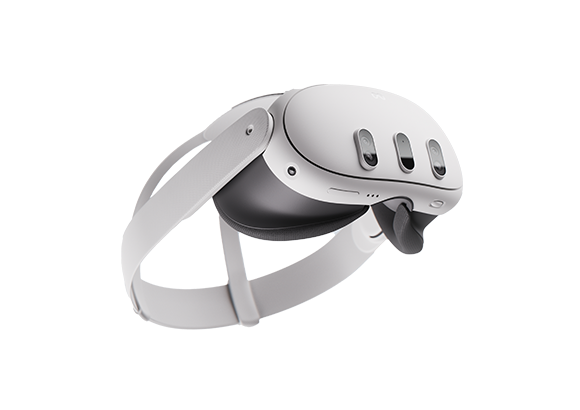
Apple Vision Pro, in contrast, is likely to command a premium price, reflective of Apple’s positioning in the tech market. This device targets a more high-end segment, offering cutting-edge technology, unparalleled build quality, and seamless integration with the Apple ecosystem. The Vision Pro’s advanced AR and VR capabilities, combined with Apple’s focus on privacy and user experience, justify its higher cost for those who prioritize premium features and ecosystem compatibility.
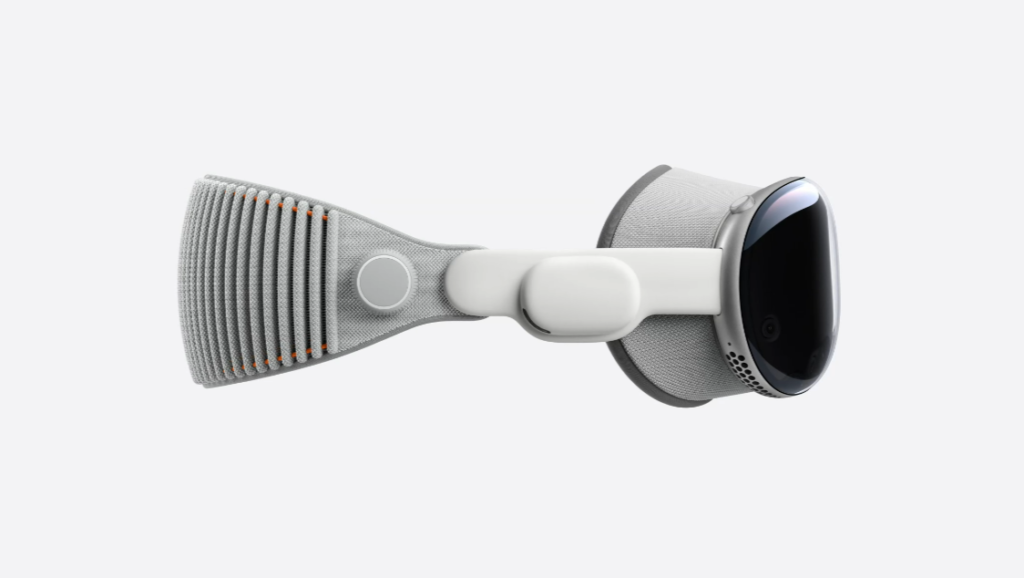
Comparing the price and value for money of the Meta Quest 3 vs Apple Vision Pro reveals different market strategies. The Quest 3 aims to deliver a solid VR experience at a price point accessible to a broader audience, making it an excellent choice for value-conscious consumers. On the other hand, the Vision Pro is tailored for users seeking the pinnacle of VR technology and who are willing to pay a premium for the advanced features and ecosystem benefits it offers.
Future Proofing and Updates
In the rapidly evolving world of technology, future-proofing and regular updates are crucial for maintaining the relevance and functionality of virtual reality headsets. As we compare the Meta Quest 3 vs Apple Vision Pro, understanding how each device is equipped to adapt and evolve over time can offer insights into their long-term value.
Meta Quest 3 is designed with future-proofing in mind, offering regular software updates that introduce new features, improve system performance, and enhance security. Meta’s track record of providing updates extends the lifecycle of its devices, ensuring that users continue to enjoy a cutting-edge VR experience. The Quest 3 also supports a wide range of content, from games to educational apps, which grows consistently thanks to an active developer community.
Apple Vision Pro benefits from Apple’s ecosystem, known for its regular and comprehensive updates that not only improve device performance but also introduce new functionalities. Apple’s approach to updates is holistic, often enhancing the integration between the Vision Pro and other Apple devices, thereby enriching the overall user experience. The Vision Pro is also expected to leverage advancements in AR and VR, with updates potentially expanding its capabilities even further.
Comparing the future-proofing and updates of the Meta Quest 3 vs Apple Vision Pro highlights the importance of ongoing support in extending the lifespan and enriching the functionality of VR headsets. The Quest 3 benefits from Meta’s consistent updates and a vibrant developer ecosystem that keeps content fresh and engaging. Conversely, the Vision Pro is positioned to leverage Apple’s ecosystem for updates that enhance both the device itself and its synergy with other Apple products.
Accessories and Add-ons
Accessories and add-ons play a significant role in enhancing the virtual reality experience, offering users the ability to customize their setup for comfort, performance, and functionality. As we delve into the Meta Quest 3 vs Apple Vision Pro, exploring the range of available accessories for each device provides insights into how users can augment their VR experience.
Meta Quest 3 offers a wide array of accessories designed to enhance usability and immersion. From ergonomic grips for the controllers to enhance gameplay comfort to external battery packs that extend playtime, the Quest 3’s accessory ecosystem is tailored to meet diverse user needs. Notable among these are the high-quality VR covers that improve hygiene and comfort, especially during extended use, and specialized audio solutions that provide superior sound quality without isolating users from their surroundings.
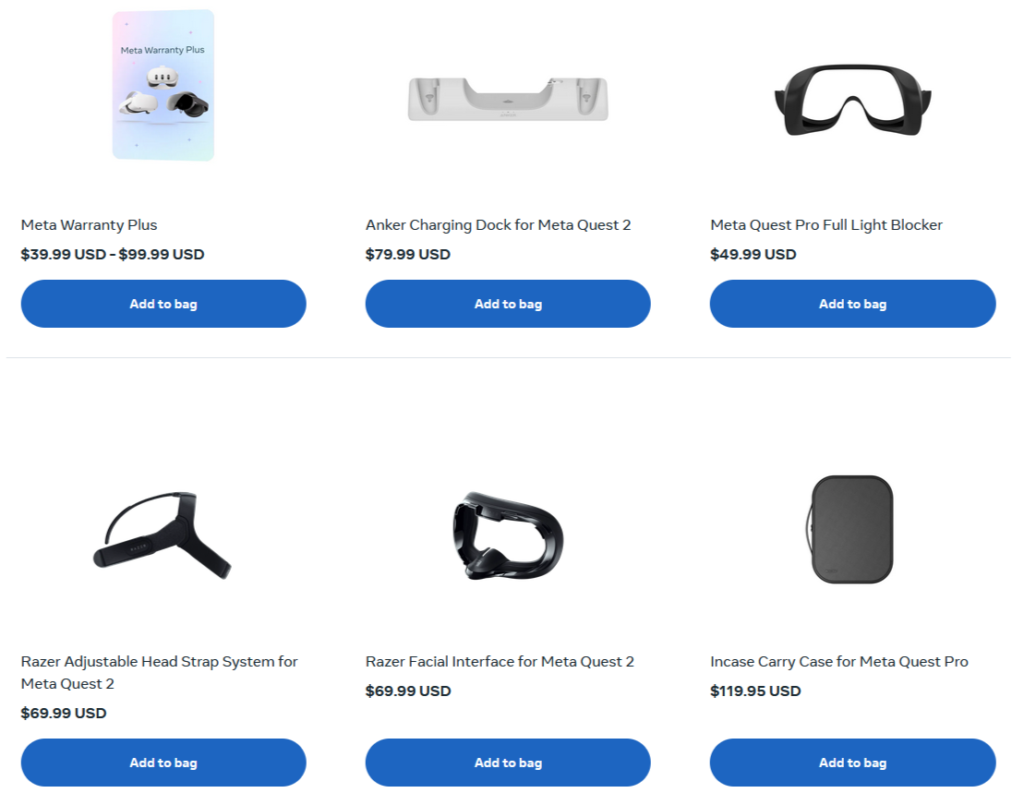
Apple Vision Pro, with Apple’s penchant for design and integration, is expected to offer a selection of premium accessories that complement its ecosystem. While specific accessories for the Vision Pro are anticipated to include advanced audio solutions, precision tracking devices, and premium carrying cases, Apple’s track record suggests these add-ons will emphasize aesthetics as much as functionality. Apple’s accessories are likely to seamlessly integrate with the Vision Pro, enhancing its capabilities and user experience.
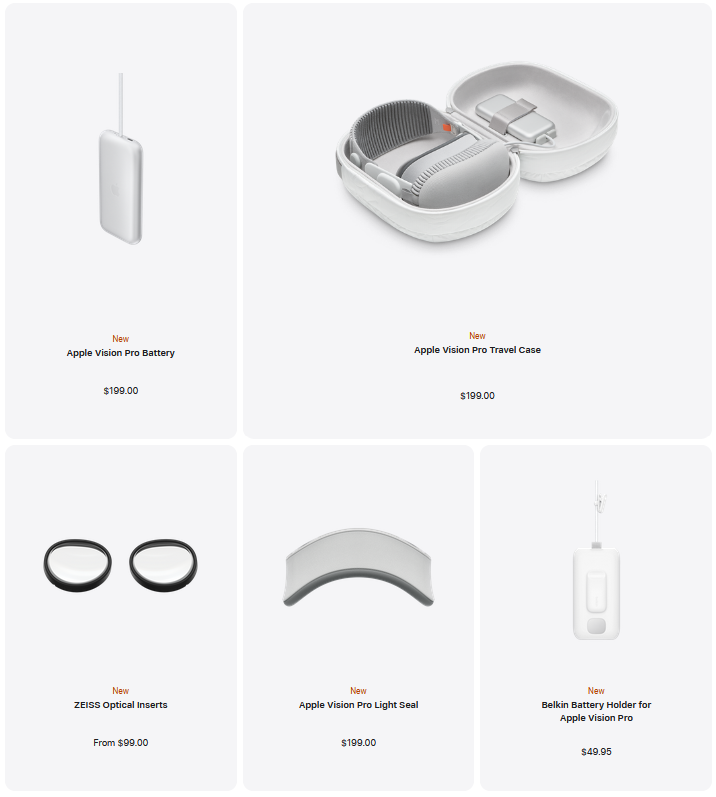
Comparing the accessories and add-ons for the Meta Quest 3 vs Apple Vision Pro reveals two different approaches to expanding the VR experience. The Quest 3 focuses on accessibility and customization, offering a variety of accessories that cater to gaming, comfort, and extended use. Meanwhile, the Vision Pro is expected to prioritize seamless integration and premium design, with accessories that not only enhance functionality but also reflect Apple’s aesthetic.
Pros and Cons
Evaluating the pros and cons of the Meta Quest 3 vs Apple Vision Pro provides a balanced view of these virtual reality headsets, helping users decide which device best fits their needs. Here, we’ll outline the strengths and weaknesses of each, based on their features, performance, and overall user experience.
Meta Quest 3
Pros:
- Accessibility: The Quest 3 is designed to be user-friendly, offering a standalone VR experience that doesn’t require additional hardware like a PC or console.
- Versatile Content Library: With access to a vast array of games, educational apps, and social VR platforms, the Quest 3 caters to a wide range of interests.
- Developer Support: A robust developer community means a constant influx of new content and updates, keeping the ecosystem vibrant.
- Price Point: Priced competitively, the Quest 3 offers good value for money, making it accessible to a broader audience.
Cons:
- Hardware Limitations: As a standalone device, the Quest 3’s processing power is limited compared to PC-tethered VR systems, which may affect the quality of more demanding VR experiences.
- Battery Life: While decent, the battery life may still require frequent charging during extended play sessions.
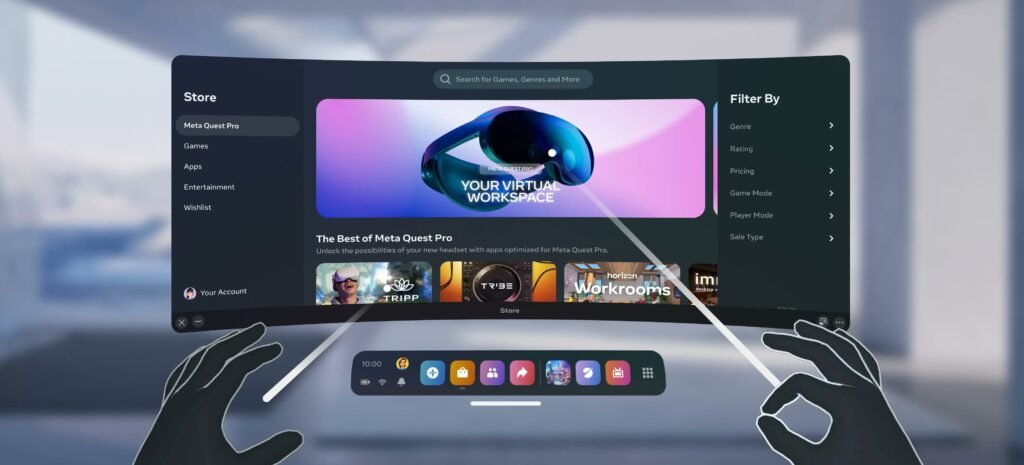
Apple Vision Pro
Pros:
- Premium Hardware and Design: The Vision Pro is expected to feature cutting-edge technology and Apple’s signature design aesthetics, offering a luxurious VR experience.
- Ecosystem Integration: Seamless integration with the Apple ecosystem enhances user experience, allowing for smooth transitions between devices and services.
- Advanced AR Capabilities: Leveraging Apple’s focus on AR, the Vision Pro is likely to excel in blending digital content with the real world for innovative experiences.
- High-Quality Display: With state-of-the-art display technology, the Vision Pro promises exceptional visual clarity and immersion.
Cons:
- Price: Reflecting Apple’s premium positioning, the Vision Pro is likely to be significantly more expensive than its competitors, making it less accessible to the average consumer.
- Ecosystem Lock-in: While offering a seamless experience for Apple users, the Vision Pro’s reliance on the Apple ecosystem may limit its appeal to those not already invested in Apple products.
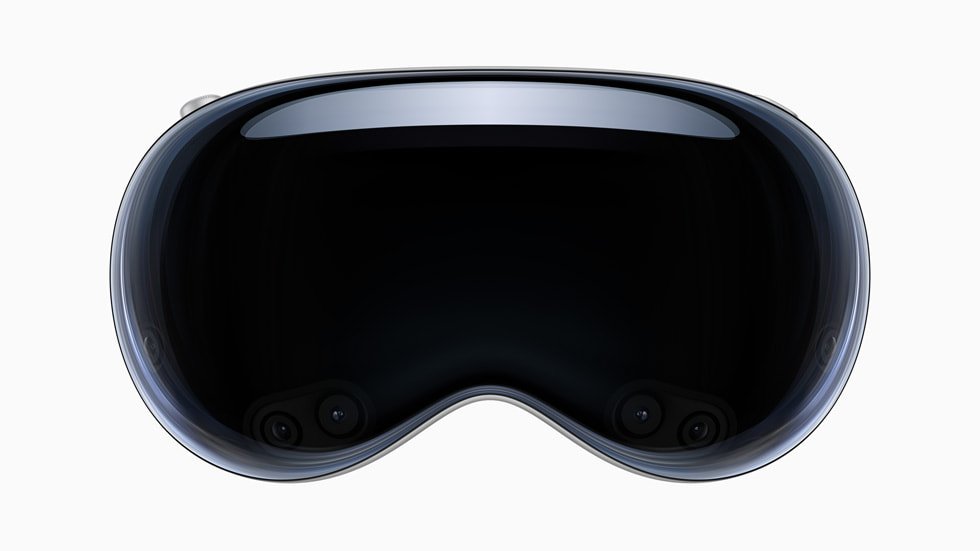
Conclusion and Recommendation
In concluding our comparison of the Meta Quest 3 vs Apple Vision Pro, it’s clear that both virtual reality headsets offer unique features and capabilities, tailored to different user needs and preferences. Through our examination of their design, performance, software ecosystem, immersive experience, and more, we’ve highlighted the distinct advantages each device brings to the virtual reality landscape.
Conclusion
Meta Quest 3 emerges as a highly accessible, versatile VR headset that balances performance with affordability. It’s ideal for those new to virtual reality or users seeking a wide range of experiences without a significant investment. The Quest 3’s standalone nature and robust content library make it a compelling choice for gamers, educators, and social VR enthusiasts alike.
Apple Vision Pro, on the other hand, is positioned as a premium VR experience, integrating advanced technology with Apple’s ecosystem. Its focus on high-quality display, augmented reality, and seamless device integration appeals to users looking for cutting-edge VR and AR experiences. The Vision Pro is suited for tech enthusiasts and loyal Apple users willing to invest in the premium features and design synonymous with Apple products.
Recommendation
For individuals seeking an entry into virtual reality or looking for a cost-effective, versatile headset, the Meta Quest 3 is highly recommended. Its combination of a broad content library, developer support, and standalone functionality offers significant value for its price.
For those already invested in the Apple ecosystem or desiring the utmost in VR technology and design, the Apple Vision Pro is the recommended choice. While its higher price point may be a consideration, the premium experience, ecosystem integration, and advanced AR capabilities justify the investment for enthusiasts and professionals alike.
Ultimately, the choice between the Meta Quest 3 and Apple Vision Pro depends on individual priorities, including budget, desired features, and ecosystem preferences. Both headsets offer pathways to immersive virtual realities, each with its strengths, ensuring that users have fantastic options to explore the expanding universe of VR.
The images used in this blog post are images provided by apple and meta.
For the Meta quest 3 vr headset click here.
For the Apple vision pro vr headset click here.


